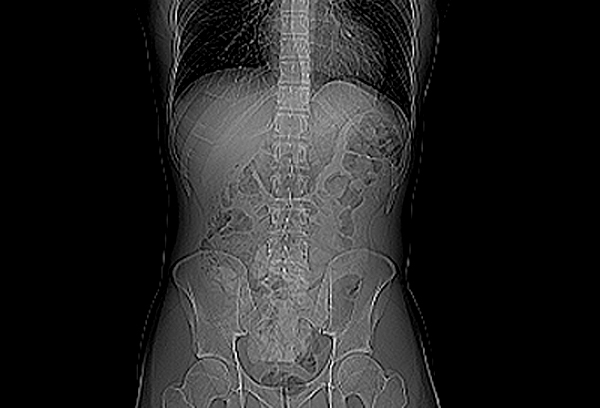One Sunday last year, I started having pains in my lower abdomen. They were sharp, and hurt badly. After calling the nurse phone line for my insurance company, I ended up going to the hospital. They checked on my white blood cell count, and then decided it would be a good idea to send me in for a CT scan to check for appendicitis.
After a boring Sunday evening, and a long stay in the ER, O found out I was fine. Funny how that works. But there was one saving grace in the whole experience. I convinced the woman running the CT scan to let me take a look at the images she had just taken.
Sure, a good amount of people have seen x-rays of a part of their body, but not nearly as many have had the opportunity (or bad luck, I guess) to see such a high resolution image of what is inside themselves, not just the bones.
As a young kid I loved to look at the stars. I was fascinated by the universe. That interest died off, but was reignited sometime around my senior year of college. Along with the universe and the stars, I was now interested in any kind of science. Case in point, The Dragons of Eden: Speculations on the Evolution of Human Intelligence by Carl Sagan was at the top of my Amazon wish list until I got it for Christmas.
So to be able to see inside myself, to see all the gross details of what’s in there, was really exciting. I’m not really educated enough to be able to tell you what exactly all of it is, but it still is amazing to me that I had the chance to see it.
So many people think it’s more exciting to live in a world where there are gods flying around above us dictating what happens, that angels regularly save people from car wrecks, or that ghosts walk among us long after people have died. But what excites me even more than that is the fact that we are all made of star dust. That there exists something like hydrogen, a “light odorless gas, which given enough time, turns into people.”1 That “we are the embodiment of a cosmos grown to self awareness. We have begun to contemplate our origins. Star stuff pondering the stars.”2
Depending on how you look at it, we do and don’t live in a demon haunted world. There are no ghosts. There are no gods. There are no angels. There is no heaven, and no hell. And yet these things haunt us daily. They haunt us by bestowing torture, rape, and subjugation. They haunt us by removing rights and dignity.
People get excited about ghost stories, but for me the real excitement lies in learning how the universe functions, how humans function, and in images of my insides.
Oh, and in case you are wondering, that really is me in the CT scan image. It’s pretty awesome that I can have copies of my own medical records.
1. “The history of the Universe has been summed up thusly: ‘Hydrogen is a light, odorless gas, which, given enough time, turns into people.'” – John P. Wiley Jr., quoting Edward R. Harrison (a cosmologist at the University of Massachusetts, Amherst) Smithsonian Magazine, December, 1995.
2. “For we are the local embodiment of a Cosmos grown to self-awareness. We have begun to contemplate our origins: starstuff pondering to the stars; organized assemblages of ten billion billion billion atoms considering the evolution of atoms; tracing the long journey by which, here at least, consciousness arose.” – Carl Sagan, Cosmos, 1980.


Recent Comments